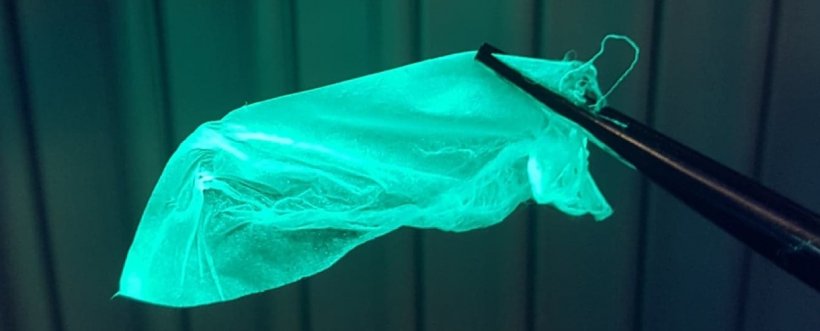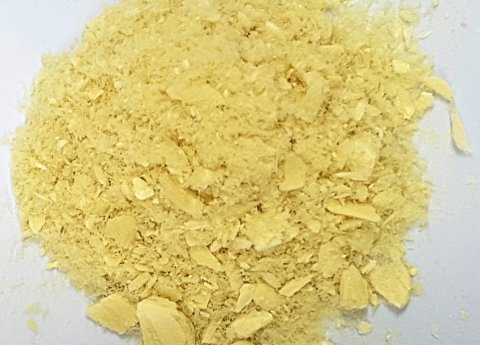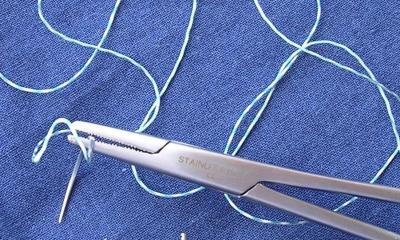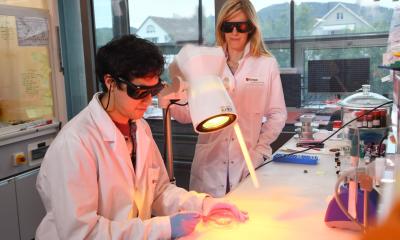
Image source: RMIT University
News • Advanced care
This 'smart' wound dressing monitors the healing process with built-in sensors
Researchers at RMIT University in Australia have developed smart wound dressings with built-in nanosensors that glow to alert patients when a wound is not healing properly.
The multifunctional, antimicrobial dressings feature fluorescent sensors that glow brightly under UV light if infection starts to set in and can be used to monitor healing progress. The smart dressings harness the powerful antibacterial and antifungal properties of magnesium hydroxide. They are cheaper to produce than silver-based dressings but equally as effective in fighting bacteria and fungi, with their antimicrobial power lasting up to a week.
The research team presented their findings in the journal ACS Applied Materials & Interfaces.
Currently the only way to check the progress of wounds is by removing bandage dressings, which is both painful and risky, giving pathogens the chance to attack
Vi Khanh Truong
Project leader Dr Vi Khanh Truong said the development of cost-effective antimicrobial dressings with built-in healing sensors would be a significant advance in wound care. “Currently the only way to check the progress of wounds is by removing bandage dressings, which is both painful and risky, giving pathogens the chance to attack,” said Truong, a Vice-Chancellor's Postdoctoral Fellow at RMIT. The smart dressings we’ve developed not only fight bacteria and reduce inflammation to help promote healing, they also have glowing sensors to track and monitor for infection. Being able to easily see if something is going wrong would reduce the need for frequent dressing changes and help to keep wounds better protected. With further research, we hope our multifunctional dressings could become part of a new generation of low-cost, magnesium-based technologies for advanced wound care.”
The global advanced wound dressing market is currently valued at an estimated $US6.9 billion and is expected to grow to $US9.9 billion by 2028, with demand fueled by technological innovations, increasing numbers of surgical procedures, and the rising prevalence of chronic wounds and chronic diseases such as diabetes and cancer. Though magnesium is known to be antimicrobial, anti-inflammatory and highly biocompatible, there has been little practical research on how it could be used on medically-relevant surfaces like dressings and bandages.

Image source: RMIT University
The new study, with lead author Dr Adam Truskewycz (now at the University of Bergen, Norway), is the first to develop fluorescent magnesium hydroxide nanosheets that could contour to the curves of bandage fibres. The research team synthesised the nanosheets - which are 10,000 to 100,000 times thinner than a human hair - and embedded them onto nanofibres. The magnesium hydroxide nanosheets respond to changes in pH, which makes them ideal for use as sensors to track healing.
Healthy skin is naturally slightly acidic while infected wounds are moderately alkaline. Under UV light, the nanosheets glow brightly in alkaline environments and fade in acidic conditions, indicating the different pH levels that mark the stages of wound healing. The nanosheets are easily integrated onto any biocompatible nanofibre, which means they can then be deposited onto standard cotton bandages. Laboratory tests showed the magnesium hydroxide nanosheets were non-toxic to human cells, while destroying emerging pathogens like drug-resistant golden staph and Candida auris.
Truong said the process to make the fluorescent nanosheets was simple to scale for potential mass production. “Normally, antimicrobial wound dressings start to lose their performance after a few days but our studies show these new dressings could last up to seven days,” he said. “And because magnesium is so abundant compared to silver, our advanced dressings could be up to 20 times cheaper.” The research team is keen to collaborate with clinicians to further progress the technology, through pre-clinical and clinical trials.
Source: RMIT University
29.06.2021











